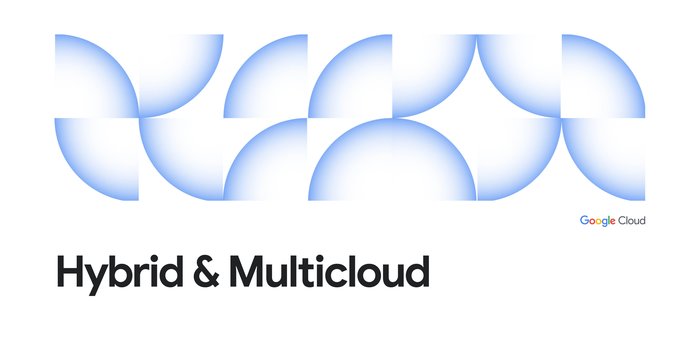Anthos: one multi-cloud management layer for all your applications
Eyal Manor
General Manager/VP of Engineering, Application Modernization Platform
When we first introduced Anthos in 2018, some observers described it as a way to modernize legacy applications. Simply drop your legacy on-prem application into a container, and you were on your way to cloud!
But since becoming generally available last April, our customers tell us Anthos is how they want to deploy, manage and optimize all their applications—legacy as well as cloud-native. It doesn’t matter who wrote the applications or where they run, applications managed by Anthos run on an infrastructure layer that’s been abstracted, and have access to high value services that let them run efficiently and securely, without fear of lock-in or needless complexity.
Anthos, in other words, is about much more than one-off application modernization; it’s about how you can build, deploy and operate applications efficiently in an increasingly hybrid and multi-cloud world. Along the way, Anthos lets you automate your infrastructure and save money by optimizing your cloud costs and reducing management overhead—wherever your applications may be.
Multi-cloud made possible
Multi-cloud, our customers tell us, is the world they want to live in. Today, enterprises have applications in a variety of locations, and they want the freedom to keep them there—or move them in the future—in response to any number of factors. Those factors can include cost, uptime, compliance requirements, latency considerations, or proximity to other services, just to name a few. Taken together, these are ways to reduce business risk—but it’s only possible if applications are portable.
But before Anthos, multi-cloud was complicated and expensive. You had to find and train technical staff knowledgeable about your different cloud APIs and services, and applications that you designed for one environment didn’t easily translate or port to another, creating silos and limiting multi-cloud’s impact.
Multi-cloud also frees customers to future-proof the the applications they build. They don’t necessarily know where they’ll build their next app, just that they will. In other words, they want to be able to build anywhere, and for the applications they create to be portable, so they can avoid being locked in.
Consistency as the greatest common denominator
Anthos makes multi-cloud easy thanks to its foundation of Kubernetes—specifically the Kubernetes-style API. Using the latest upstream version as a starting point, Anthos can see, orchestrate and manage any workload that talks to the Kubernetes API—the lingua franca of modern application development, and an interface that supports more and more traditional workloads.
Then, Anthos goes on to empower developers with the latest cloud technologies. Integrations with offerings like Cloud Code let developers automate the test and release software faster, and with a higher degree of quality. Cloud Run for Anthos lets them build elastic services that run anywhere, and Config Connector lets them natively access any cloud resource including VMs—all in a uniform way. Whatever technology it was that brought them to Anthos, the systems they build on Anthos today will be consistent across whatever environments they deploy to tomorrow, all while reducing costs and improving developer velocity.
Security, visibility and scale
And while this Kubernetes consistency may be what makes multi-cloud possible, Anthos’ benefits don’t end there. Other Anthos components deliver capabilities that other platform providers simply don’t offer. Customers tell us they want to set up security policies that they can automatically enforce across all their environments, so they can audit and govern their environment, and demonstrate compliance with policy-driven controls. Leveraging the Anthos outcome-focused configuration model, for example, Anthos Config Manager allows you to define policies about how and where a workload can run—and ensure that it continues to run in that way—across all your Anthos deployments.
They also want better visibility into their applications. Anthos Service Mesh is a managed service that provides security and observability for applications running in an Anthos-managed system—the performance, service level objectives, the events, the network traffic—helping you exert fine-grained control of that traffic while removing some of the difficult and undifferentiated work of upgrades and patching.
Finally, customers want to do this without spending more money. In fact, they’re looking to Anthos to help them save money. As a managed, programmatically-addressed software layer, Anthos reduces operational overhead with its built-in state automation, and increases developer productivity by optimizing the developer tool chain. And going forward, it will accelerate savings even more, by freeing organizations from legacy software license costs.
Toward Anthos everywhere
With this visibility into the actual and desired states of your multi-cloud infrastructure—and the ability to enforce the desired state—Anthos lets you optimize your environment, helping you meet your cost, uptime, performance and security goals. Armed with the operational data that Anthos provides, you can decide how to manage applications based on things like performance and latency needs, or perhaps an outage at one of your locations. This is the promise of multi-cloud, and one of Anthos’ many unique benefits.
Customers tell us that what Anthos can do is so transformational, that they want us to extend Anthos to more kinds of applications. Why limit modern application deployment, management, and control to new applications? We agree and we’re working hard to help bring Anthos to every application running everywhere. Until then, you can learn more about how Anthos can positively impact your bottom line by reading the latest Total Economic Impact report written by Forrester Research.


